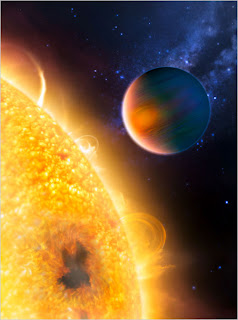
They are of several types – carbohydrates, lipids, proteins, enzymes, hormones, vitamins and nucleotides.
Carbohydrates – They are commonly called fuel compounds since respiration usually involves their oxidation of energy. Carbohydrates constitute 1-2% of the protoplasm. They are compounds of carbon, hydrogen and oxygen where hydrogen and oxygen occurs in the ration 1:2. Structurally carbohydrates are of three types – monosaccharides, oligosaccharides and polysaccharides.
Monosaccharides are simples sugar which cannot be further hydrolysed. The general formula is Cn H2n On. Depending upon the number of carbon atoms, monosaccharides are called dioses (C2H4O2), trioses, tetroses, pentoses, hexoses and heptoses. The two important pentose sugars are ribose and deoxyribose. They are constituents of RNA and DNA respectively. Amount hexoses glucose and fructose are used as respiratory substances. Most monosaccharides are sweet to taste. They readily dissolved in water and pass through cell membranes.
Oligosaccharides are condensation products of 2-6 monosaccharides. They are generally sweet and soluble. The most common disaccharide is sucrose or cane sugar. Others are maltose and lactose.
Raffinose is trisaccharide while stachyose is a tetrasaccharide. Oligosaccharides are generally employed for translocation of carbohydrates and sometimes for their storage (e.g., in sugarcane). Like monosaccharides, oligosaccharides are generally sweetish in taste. They dissolved in water but pass through cell membrances only slowly.
Polysaccharides are condensation products of a large number of monosachharides. They are of further two types – homopolysaccharides and heteropolysaccharides. Homoplysaccharides are made of a single types of monosaccharides e.g., starch, glycogen, cellulose, aranban, xylans, arabino-galactans (all found in hemicelluloses). Polysaccharides are not sweet in taste. They are not soluble in water. However, many of them form colloidal solutions. They are usually unable to pass through cell membrances.
Glucose a monosaccharides is the main substrate for liberation of energy during respiration. Therefore, it is also called respiratory fuel. Other hexose monosaccharides also de likewise. Pentose sugar ribose and deoxyribose are constituents of nucleic acids, nucleosides, nucleotides ATP, AMP, NAD, NADP, etc. Many monosaccharides (e.g., erythrorse, ribulose, xylulose, glyceraldehydes) from important intermediates of metabolic pathways. Some disaccharides (e.g., sucrose in sugarcane) and other oliogosachharides may be storage products in some plants. monosaccharides and oligosaccharides takes part in translocation of carbohydrates from one part to another part. Sugar derivatives (e.g., glucuronic acid, galacturonic acids, acetyl glucosamine) function as basic component of some important biochemical like pectic compounds, fungus cellulose, chitin, etc. Polysaccharides like starch (in plants) and glycogen (animals, fungi, bacteria) are the major storage materials. Some of the polysaccharides like cellulose in plants, chitin in arthropodas, and fungus cellulose in fungi function as supporting frame work. Oligosaccharides attached to constituents of cell membrances function in recognition. Hemicelluloses of plants cell walls binds cellulose with pectic compounds. Pectic compounds gives rise to mucilage or mucous for protection.

1 comment:
matchpoint | stillcasino.com
Match Point matchpoint Logo. Match Point Logo. Match Point Logo. Match Point 1XBET Logo. Match Point Logo. Match Point Logo. Match Point rb88 Logo. Match Point Logo. Match Point Logo
Post a Comment